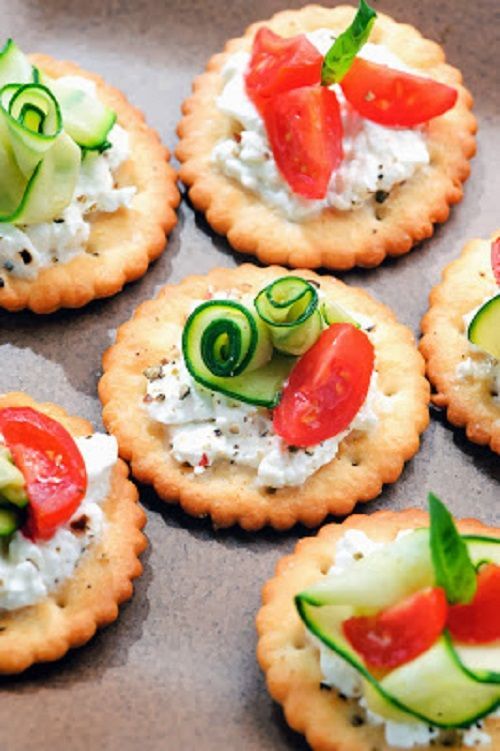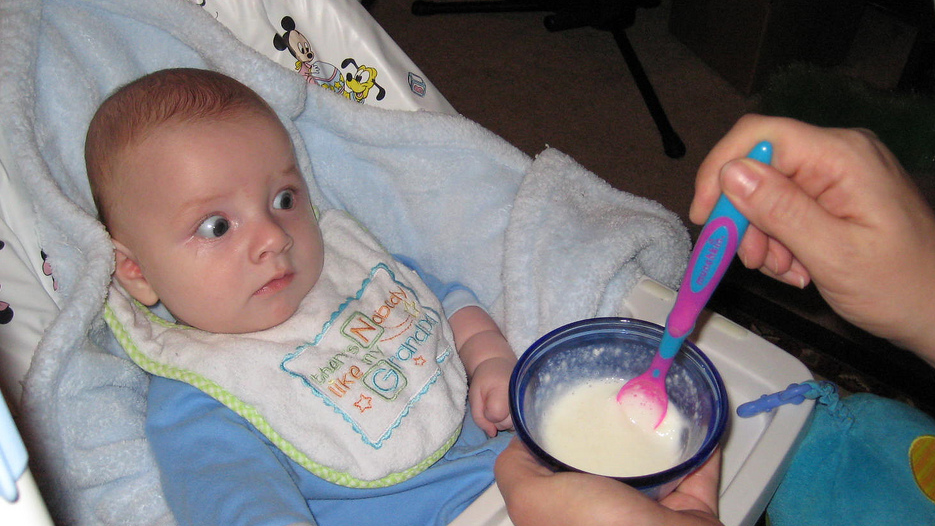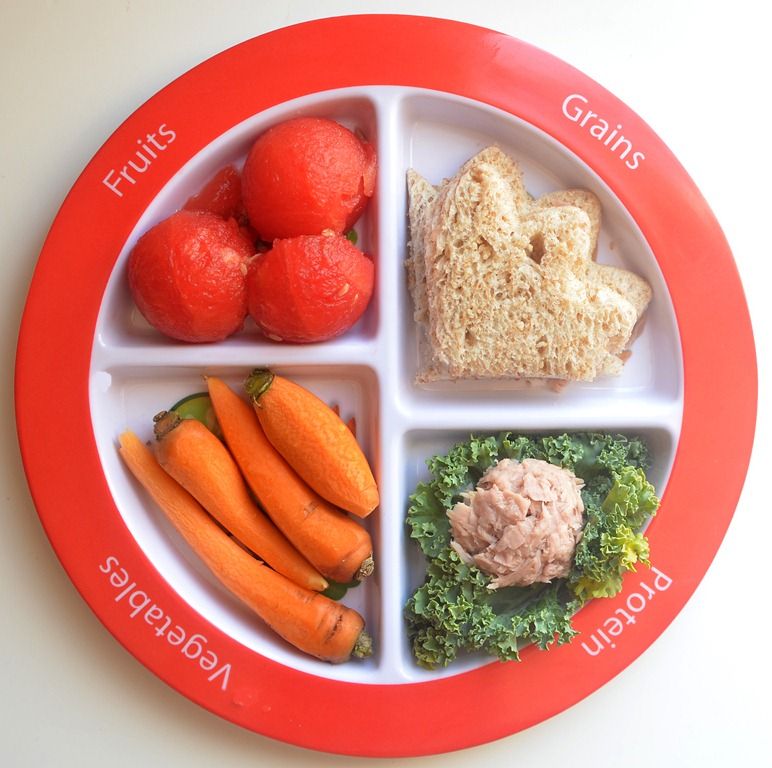Baby gags on finger foods
Babies Gagging vs. Choking When Starting Solids
Adie, 12 months, gags on a small piece of bread.What is gagging?
Gagging is a natural protective reflex that results in the contraction of the back of the throat to protect us from choking. Just like the reflexive kick that occurs when the doctor taps your knee in just the right spot, the gag happens automatically, initiating a rhythmic bottom-up contraction of your pharynx (the tube that leads to your stomach) to assist in bringing food up and to stop the swallowing reflex from making our bodies try to swallow.
>> Just starting solids? Check out our virtual course (includes videos on infant rescue) as well as our guides and recipes on for the best first foods for baby. And if you are struggling with the transition from spoon feeding / purees to self-feeding with table food, watch our Spoons to Fingers video.
This page has been created with typically developing infants and children in mind. The information here is generalized for a broad audience and is for informational purposes only. If your child has underlying medical or developmental differences, including but not limited to prematurity, developmental delay, hypotonia, airway differences, chromosomal abnormalities, craniofacial anomalies, gastrointestinal differences, cardiopulmonary disease, or neurological differences, we strongly recommend you discuss your child’s feeding plan with the child’s doctor, health care provider or therapy team. The opinions, advice, suggestions and information presented in this article on gagging are for informational purposes only and are not a substitute for professional advice from or consultation with your pediatric medical or health professional. If your child is having a health emergency, please call 911 or your emergency medical resource provider immediately.
Swallowing is a complex reflex with multiple lines of defense built in to prevent choking. These actions happen reflexively, meaning the brainstem tells our body to do them–they are involuntary. There are three important lines of defense that we have with every single swallow.
There are three important lines of defense that we have with every single swallow.
1. When we swallow, our vocal cords, which are like sliding doors inside the breathing tube, come together, closing off the airway and preventing food from entering the lungs.
2. The muscles of the throat pull the breathing tube slightly up and forward, tucking it safely out of the way of the food passing.
3. The epiglottis, a tiny flap of cartilage, tilts down to cover the airway forming a tight seal with the joints that help move the vocal cords.
Just like any good system, we have back up already built in. We even have back up for those back ups that are activated if needed. For example, if anything gets too close to the opening of the airway, even before it gets a chance to get in, the vocal cords immediately close (the technical name for this is the laryngeal adductor reflex), and our body immediately coughs to push the item away from the breathing tube. Our bodies are quite skilled at keeping us safe. 12
12
First, it is important to distinguish the difference between gagging and choking.
True choking is when the airway is obstructed, and the baby is having trouble breathing. Signs of a baby choking can include:
- inability to cry
- difficulty breathing
- skin tugging into the chest
- look of terror
- high-pitched sounds
- skin color changes (ranging from blue to purple to ashen-like)
If you suspect baby is choking, immediately administer infant choking first aid with alternating back blows and chest thrusts and call 9-1-1 or local emergency services on speakerphone so your hands are free. If another person is present, one person should immediately perform choking first aid while the other calls for help. Conduct age-appropriate CPR if you believe baby’s airway is open, but the child is not breathing.
On the other hand, gagging is a common protective reflex that results in the contraction of the back of the throat. It is a natural function and protects us from choking. When this happens, it’s important to let baby work the food forward on their own. Refrain from sticking your finger in baby’s mouth, which can push the object further down the throat, making the situation worse.
It is a natural function and protects us from choking. When this happens, it’s important to let baby work the food forward on their own. Refrain from sticking your finger in baby’s mouth, which can push the object further down the throat, making the situation worse.
We strongly recommend you take a CPR class online or at your local health facility and review safety procedures. Our choking, gagging & infant rescue video can also help you visualize the difference. Further resources:
- American Red Cross: Child & Baby CPR
- American Heart Association: Infant CPR Training Kits
- Harvard Health: Heimlich Maneuver on an Infant
Gagging is a completely normal reflex in infants, children and adults alike. Gagging is very common and will happen a lot in baby’s solid food journey. All babies gag in their eating journey—it’s one way they learn how to eat. The good news is that babies typically outgrow gagging after a couple of months of practice with various textured foods.
The good news is that babies typically outgrow gagging after a couple of months of practice with various textured foods.
Babies often gag well before they start solids, when breast or bottle feeding. This typically occurs when baby either isn’t properly latched, and the nipple triggers the reflex, or if the baby isn’t ready to swallow milk for whatever reason. Some babies gag when mom’s letdown is too fast. Others gag when they need to catch their breath instead of swallowing. Many babies will gag on a pacifier or certain bottle nipples if they aren’t familiar with them. All of these gags occur because the brain is trying to protect the baby from swallowing an “intruder,” or something the baby isn’t ready to swallow. This gag reflex typically lessens over the first few months of baby’s life when baby gets “desensitized” and learns to accept it (pacifier, nipple, or food texture) without gagging. This occasional gagging at a young age does not seem to bother most infants.
Interestingly, the gag reflex of a 6- to 10-month-old baby is much more sensitive and can be triggered more forward on the tongue than an adult.3 4 This is why babies gag easily: the more forward the gag trigger is on the tongue, the easier it is to trigger.5 It is not uncommon for babies to gag (and occasionally vomit) for the first few weeks of solids. If baby repeatedly gags and vomits past the first month of starting solids, consult your pediatrician, who may refer you to a swallowing specialist.
Watch our video on gagging and all of the other normal, sometimes nerve-wracking things babies do while starting solids.
Cooper, 6 months, gags on applesauce.Ronan, 7 months, gags on a flattened blueberry, spits up some, and carries on eating.Quentin, 8 months, gags and coughs on some bread with avocado. Bread is notorious for triggering gagging as it sticks to saliva on the tongue.Gagging helps prevent chokingWhen the gag reflex is triggered, it forces the back of the throat to close, essentially preventing swallowing. If food caused baby to gag, the reflex forces the food (or object) forward towards the front of the tongue. Young infants naturally open their lips when they gag, which means that typically, the food or object that caused the gag keeps moving out of the mouth.
Gagging is completely normal and incredibly important for baby’s safety, both at the table and away from it.
Gagging helps babies learn to eatFor babies to build the skills for chewing and managing all foods (not just easy-to-chew foods), we need to give them opportunities to make mistakes, like taking a too-big bite of food. When a baby bites off too much food and cannot properly move it around to chew, the gag reflex will kick in and help thrust the food forward. The experience teaches baby that the food was too big to swallow. These experiences are essential for learning and building confidence in biting and tearing. Over time, baby will learn to take smaller bites and become more adept at moving food around to chew properly.
Once baby is a few weeks into their solid food journey, you can use the gag reflex to your advantage. Offer foods that are not as easy to chew to help advance baby’s oral development more quickly. When poorly chewed food touches the tongue, the gag reflex will do its job, and baby will learn they need to chew the food more.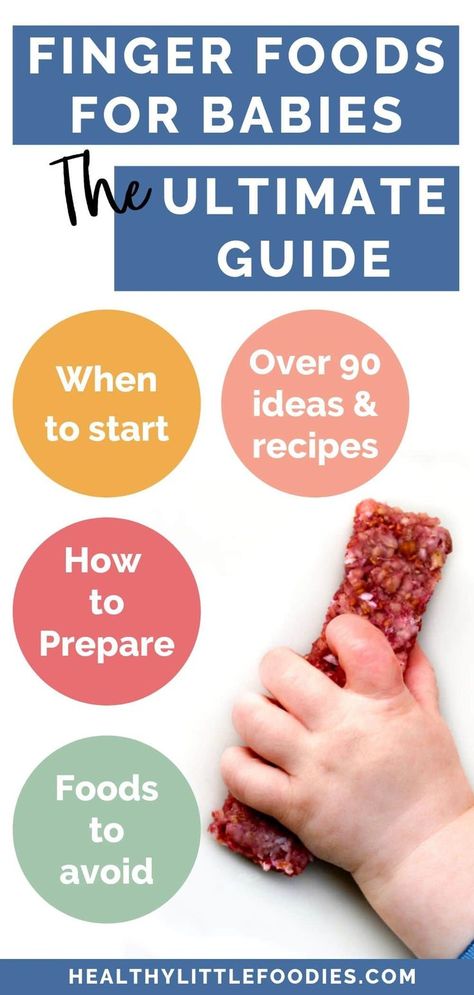
It’s important to challenge baby before they get too accustomed to mashes and soft foods. Babies quickly learn that chewing and swallowing mashes and other easy-to-chew foods easily satisfies their hunger with minimal work. Many babies won’t bother trying to improve their skills with tough consistencies that require more biting and tearing, and may refuse the challenging foods and wait for the easier foods.
Hillis, 6 months, gags on a vegetable purée.Addie, 9 months, gags and coughs on asparagus and successfully moves it forward out of her mouth.Ysabella, 8 months, gags on purple dragon fruitWhy is my baby gagging? Gagging is easily triggeredWhen it comes to young babies, the gag reflex is pretty easy to trigger. Touch the middle of the tongue, and many babies will gag. If you watch a 3- to 4-month-old baby mouthing their hands and fingers, you will see them gagging themselves frequently. This is common and normal. Babies are typically not bothered by it and will often keep doing it.
Our mouths are one of the most sensitive parts of our bodies. The human mouth has many sensory receptors to detect touch, taste, temperature, pressure, and other input types. Babies are driven to explore with their mouths to learn about their world simply because the mouth is sensitive. Mouthing exploration could be very unsafe if babies didn’t have gagging as a natural safety net.
Importantly, young infants have immature hand and finger coordination, which means they can’t easily remove something they put in their mouth. They also have immature oral motor (tongue and mouth) coordination. They can’t easily use their tongue to find an object in their mouth and spit it out. This is another reason the gag reflex is a safety reflex, as it allows a baby to put an object in their mouth and then push it back out again without letting it get close to the throat. As babies put things in their mouth, the gag reflex tells them when things are not supposed to be there and prevents it from moving too far back towards the throat.
The gag reflex moves further back in the mouth as babies ageFrom birth to around 7-9 months, the gag reflex is triggered close to the front of the mouth (around the middle of the tongue). At this age, the gag reflex is as sensitive as it will ever be.6 This is important for safety because objects (food or anything else) will quickly trigger the gag reflex and be pushed out of the mouth before they get past the middle of the tongue.
Sometime around 7-12 months of age, the gag reflex slowly desensitizes. The gag trigger moves from the middle of the tongue to the back of the tongue towards the throat.7 At this point, food or objects can get much closer to the throat before the body recognizes something is too big to swallow and tries to push it back out. This might sound scary, but remember, our bodies are amazing! The gag reflex remains active and strong, so if something (food, barbie shoe, bug, etc.) hits the back of the tongue, the back of the palate (roof of the mouth), or even the back of the throat, the gag still kicks in.
Mahalia, 10 months, gags on some orange stuck to her tongue. If you look closely, you can see the orange isn’t actually all that far back in her mouth, but more on the middle of her tongue. She recovers nicely and carries on eating.Adie, 12 months, gags and coughs on a piece of bread. Bread sticks to the saliva on our tongues easily and can trigger the gag reflex a lot. As you see here, Adie recovers nicely and carries on eating.Babies gag on puréed food and jarred baby food, too
She recovers nicely and carries on eating.Adie, 12 months, gags and coughs on a piece of bread. Bread sticks to the saliva on our tongues easily and can trigger the gag reflex a lot. As you see here, Adie recovers nicely and carries on eating.Babies gag on puréed food and jarred baby food, tooThe threshold for what triggers a gag and the gag’s intensity is different in every baby, but most infants will go through a period where anything in their mouth thicker than breast milk or formula will cause a gag. The brain says: “Wait, this isn’t right! I shouldn’t swallow this! GAG!” Many will gag with spoon-feeding experiences even with runny, watery bland purées.
Until the special day you decide to start solids, baby hasn’t had to manage anything but a watery-thin, fast-moving liquid.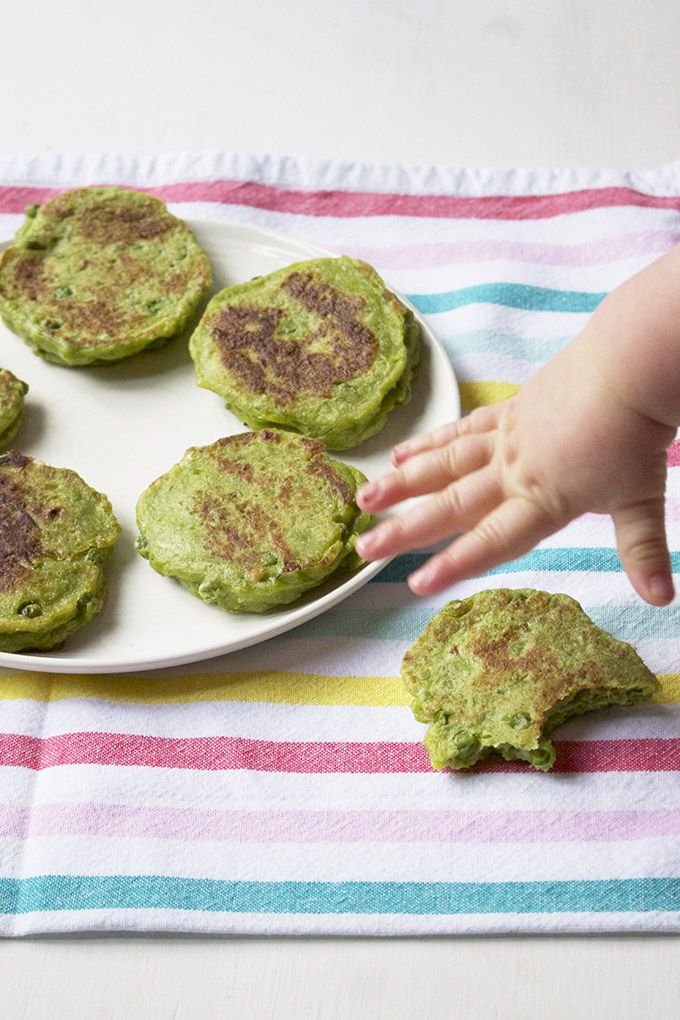 Enter something slightly thicker, slippery, and a different flavor — baby’s brain will kick in with protective mechanisms to gag and prevent swallowing this invading purée. This is usually short-lived because thin purées are quite similar to liquids and the texture won’t trigger a gag for very long.
Enter something slightly thicker, slippery, and a different flavor — baby’s brain will kick in with protective mechanisms to gag and prevent swallowing this invading purée. This is usually short-lived because thin purées are quite similar to liquids and the texture won’t trigger a gag for very long.
Babies know to push the tongue against a breast or bottle nipple to initiate suction and move the liquid backward to their throat. Spoon-feeding can present unique oral-motor challenges. With a spoonful of purée dropped on the middle of the tongue, baby has nothing to suck or push against and doesn’t yet know the skills to help move that food backward. Because they can’t move the purée backward quickly, it either continues to sit on the middle of the tongue or will start spreading around the mouth, which can lead to gagging. Many wise babies will suck on the spoon to help them quickly move the purée back to swallow, just like they do from a bottle or breast. Those babies, who now have a way to control the purée, will often easily swallow with minimal or no gagging.
While not all babies who are spoon-fed gag, many do. Not surprisingly, when a baby is exclusively spoon-fed for a prolonged period of time (past 8 months of age, for example), that child may gag more when they start finger foods due to the lack of texture exposure.
Max, 4 months, gags on rice cereal.Levi, 6 months, gags on a vegetable purée. Jai, 6 months old, gags on a squash purée and mom (rightfully) asks her partner not to intervene. Spoon-fed babies gag less at first but gag more later
Spoon-fed babies gag less at first but gag more laterWhen a baby is started on solids with thin, watery purées and pouches, the baby’s tongue receives less sensory input. While babies gag on purées too, they acclimate to the smooth texture or figure out how to use the spoon to suck back and swallow, which reduces gagging. However, all babies will frequently go through gagging periods when introduced to finger foods — whether 6-month-olds or older spoon-fed babies. When baby is first offered finger foods, the brain engages the safety call: “This doesn’t seem right! I don’t know how to move this! We shouldn’t swallow this food!” Often, this period of gagging will last longer with babies who started with spoon-feeding.8
In 2016, the “BLISS” study found that babies who follow a spoon-feeding approach to solids (spoon feeding smooth purées > lumpy purées > finger foods) tend to gag less at 6 months but more at 8 months and later.9 Remember: around 8 months, a baby’s gag reflex becomes less sensitive and moves further in the back of the mouth. This means that food is closer to the throat before the body reacts and tries to push it out.10 In other words, waiting to introduce finger foods until after baby is 8 or 9 months old may increase the choking risk as the gag reflex is less sensitive, further back in the mouth, and baby is not accustomed to textures other than soft foods from a spoon.
This means that food is closer to the throat before the body reacts and tries to push it out.10 In other words, waiting to introduce finger foods until after baby is 8 or 9 months old may increase the choking risk as the gag reflex is less sensitive, further back in the mouth, and baby is not accustomed to textures other than soft foods from a spoon.
By 8-9 months old, a spoon-fed baby has been practicing a very specific skill to eat. “Purées come into my mouth. I suck or lift my tongue to move that puréed food backward, and I swallow it.” Babies will always start with the skill they know and try to use that same pattern on solid foods. They try to move that solid food straight back without the necessary step of moving the food laterally to their gums to chew. This motor pattern often leads to even more gagging.
The older the baby, the more aware they are of gagging and its unpleasantness. A 9-month-old baby is more aware of gagging than a 6-month-old baby.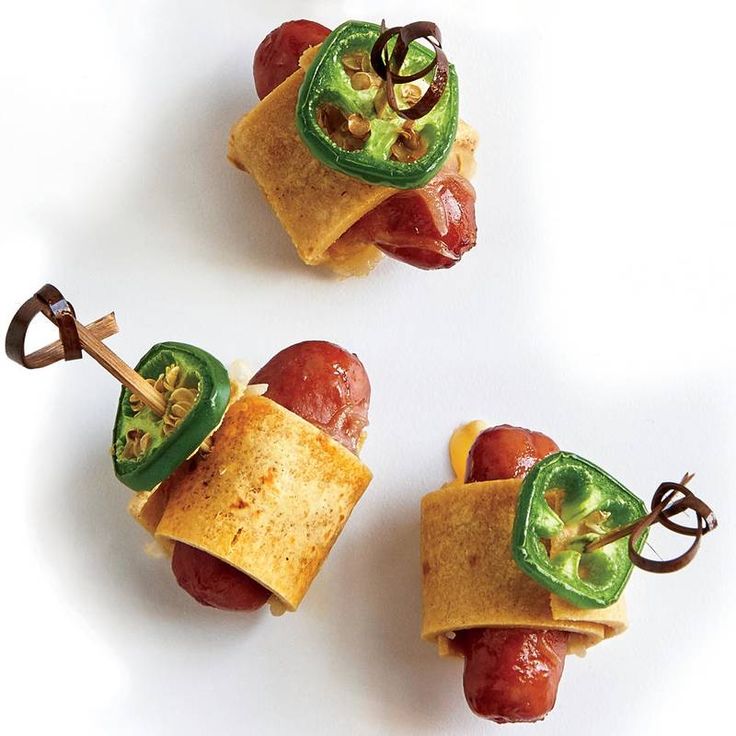 “Hebbian plasticity”—a fancy term that brain specialists use—tells us that neurons that fire together wire together. This means that when one part of the brain lights up simultaneously as another part of the brain, the brain starts to build a connection between those two areas. So, frequently gagging as the baby gets older and more aware of their body may be problematic for some babies who seem to draw a connection between real food and gagging. These babies seem to learn quickly that real food will make them gag and can lead to refusal of any food that is not a purée or mash. By contrast, younger infants don’t seem affected as much as older babies and toddlers.
“Hebbian plasticity”—a fancy term that brain specialists use—tells us that neurons that fire together wire together. This means that when one part of the brain lights up simultaneously as another part of the brain, the brain starts to build a connection between those two areas. So, frequently gagging as the baby gets older and more aware of their body may be problematic for some babies who seem to draw a connection between real food and gagging. These babies seem to learn quickly that real food will make them gag and can lead to refusal of any food that is not a purée or mash. By contrast, younger infants don’t seem affected as much as older babies and toddlers.
At 6 months old, the gag reflex is necessary to exploring food. It’s what allows a young baby with almost zero chewing skills to put a piece of food in their mouth and, if it is too big to swallow, get that food safely back out.
Infants learn how to do amazing things—sitting, crawling, walking, and running—by using reflexes, fumbling around, and making lots of mistakes while slowly building strength and adding one movement on top of another. The same applies when learning to chew—babies use reflexes coupled with fumbling as they learn.
The same applies when learning to chew—babies use reflexes coupled with fumbling as they learn.
Amazingly, babies have two other key reflexes—the biting reflex and the tongue lateralization reflex— which help them learn to chew right away at 6 months. For foods to be properly chewed, baby needs to:
- Take a bite.
- Move that food to the side (tongue lateralization).
- Munch up and down to break down the food down.
- Move the food back to the tongue for swallowing.
When babies first start finger food, they will struggle to use their biting and lateralization reflexes in any coordinated way. Simply put, they fumble around! As babies learn to eat, they won’t break down food enough to safely swallow, which requires the gag reflex to push the unchewed food back out. But every time baby does that, they are learning where the food is in their mouth. Slowly and incrementally, babies learn how to move food to different parts of their mouth. They learn their tongue can help push food around the mouth in lots of directions. They learn their palate, tongue, gums, and saliva will break the food down as it moves around their mouth. All of these actions turn a solid food into something like a mash!
They learn their tongue can help push food around the mouth in lots of directions. They learn their palate, tongue, gums, and saliva will break the food down as it moves around their mouth. All of these actions turn a solid food into something like a mash!
Some experts suggest that purees teach babies to swallow correctly, and gives practice swallowing solids before you introduce the idea of chewing. Most babies do not need to be taught how to swallow. Swallowing is a deep brainstem reflex present by 15 weeks gestation2 and well established by full term birth. Babies already know how to swallow; there is no need to practice! Interestingly enough, thicker textures are actually easier for babies to swallow (think purees), and our feeding therapists explain that babies who have swallowing difficulty are actually prescribed thickened milk to drink! But purees do teach baby a motor pattern: bring food in, move it back, swallow. This is a dangerous pattern because most solid foods require chewing before you move them back and can safely swallow.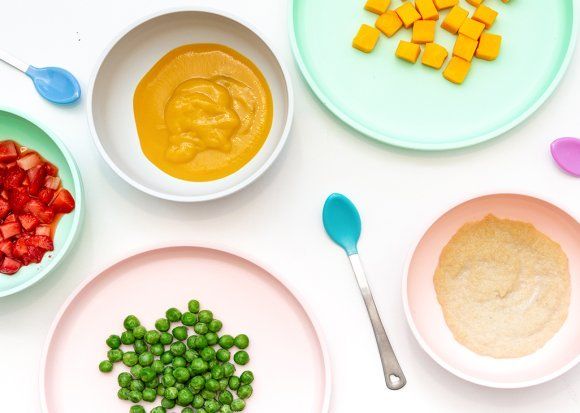 We believe that exclusive purees are time wasted because baby isn’t practicing chewing and is practicing a dangerous motor pattern that must be unlearned.
We believe that exclusive purees are time wasted because baby isn’t practicing chewing and is practicing a dangerous motor pattern that must be unlearned.
Interestingly, the BLISS study also demonstrated that infants who started solids with finger foods experienced more gagging at 6 months, but less gagging at 8-9 months as they developed more control and coordination in moving food around their mouth.11 This demonstrates that babies who are given the opportunity to work with finger foods early on in their solids journey—well before 8 months of age—develop the oral-motor skills required for mature eating more quickly than spoon-fed babies.
After a couple of months, most babies who start with finger foods at 6 months of age develop the skill and coordination to chew and move well-chewed food backward to swallow safely. The baby feels comfortable with their skills and is accustomed to food moving in this way. The body won’t initiate a gag so readily.
By contrast, babies who start solids with purées have had little chewing practice from 6-8 months. It’s likely they are less coordinated with moving food around their mouth, less able to break down the food, and less safe in the instance that the food gets pushed back further in the mouth than they can handle.
It’s likely they are less coordinated with moving food around their mouth, less able to break down the food, and less safe in the instance that the food gets pushed back further in the mouth than they can handle.
 How to help baby move past gagging by building skill
How to help baby move past gagging by building skillSuccessful eating is not just about chewing but about feeling where the food is in the mouth and knowing if it’s chewed “enough” to swallow safely. As adults, most of us can identify and discretely spit out a tiny piece of bone or eggshell from a bite of food. Because this is happening inside the mouth, we aren’t using our eyes; our brains visualize what’s going on inside our mouth, even though we don’t frequently see what’s going on in there. We have a mental image of our mouth and where everything is in relation to other parts. Babies don’t have this “mental map” of their mouth at first.
To help you understand the necessity of a mental map, think about babies learning to stand. Before they can do this, they need to develop “body awareness” or, essentially, a mental “map” of where all their body parts are in relation to each other. Baby lays on the floor and slowly learns to roll around before they ever sit up. Rolling and touching their whole body—from head to toe—while their muscles push and pull helps form the mental “map” of their body. They need deep input all over their body to add all the details to that map. A small touch to one part of their body or a light brush of your hand over their body helps a little but isn’t really enough. It’s the floor’s firm input to the whole body while moving the muscles that really seems to form a clear map.
Rolling and touching their whole body—from head to toe—while their muscles push and pull helps form the mental “map” of their body. They need deep input all over their body to add all the details to that map. A small touch to one part of their body or a light brush of your hand over their body helps a little but isn’t really enough. It’s the floor’s firm input to the whole body while moving the muscles that really seems to form a clear map.
The same goes for the inside the mouth. When things touch the inside of our mouth, a map slowly “draws” in our brain. As babies develops the map inside their mouth, they gain more control, figuring out how to move food around appropriately. They also become more confident in their skill to move food around. This control seems to help quiet the gag response and move it further back in the mouth over time. The baby does not need the gag reflex to eat once they have a clear map and strong coordination. They now have active control to chew the food, know if it’s chewed enough, move it back to swallow, or spit it out and try again.
We know that many types of sensory input in the mouth help babies form the “mental map,” but that bigger inputs are more effective than light sensory inputs. (Think about the difference between a tight hug versus a tickle on the shoulder.)
There are two types of input that feeding therapists know are most effective for sensory-motor learning:
- Touch or tactile input – when food touches a part or many parts of the mouth
- Messages from the muscles and joints or proprioceptive input – when the mouth gnaws on firm or resistive foods that don’t break when chewing.
The simultaneous combination of tactile and proprioceptive input is most effective for forming the map. This is why feeding therapists frequently recommend giving resistive, flavorful foods like a rib bone for baby to chew.
Foods like a rib bone accomplish the trifecta:
- Baby can hold the food, easily put it in their mouth, and pull it back out with their hands, which gives them control to keep the food at the front of their mouth even if they don’t have oral motor control.
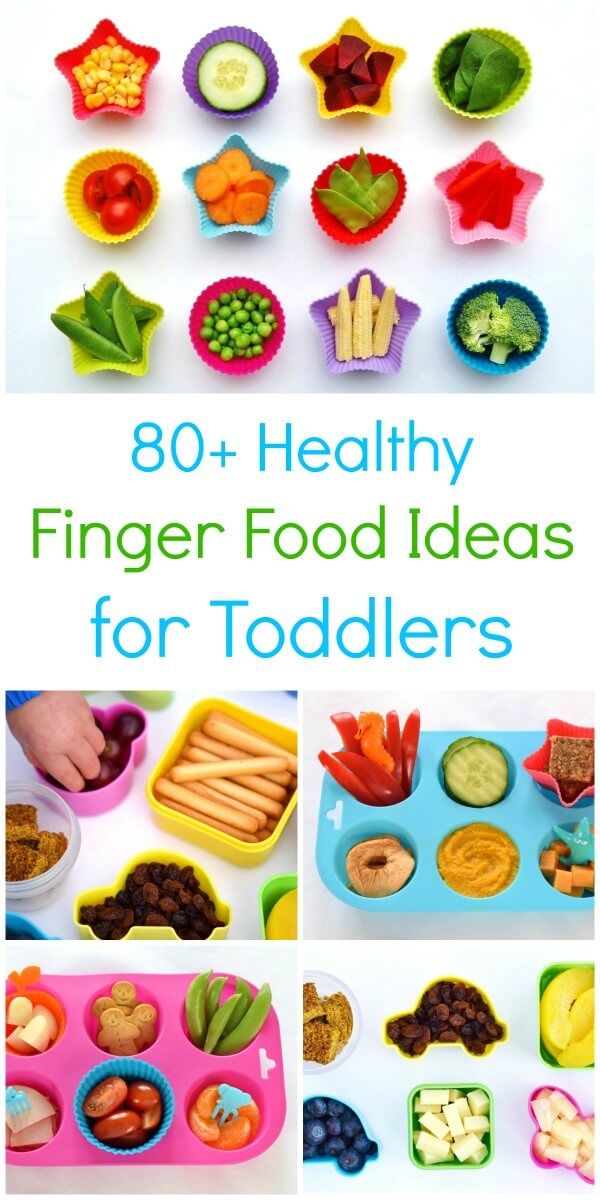
- Baby gets big input to their mouth (touch input and muscle feedback as they bite on the bone), which maps the mouth and leads to better control in the future.
- Baby triggers two key reflexes (biting reflex and the tongue lateralization reflex), which mimic chewing and help baby build strength and coordination for future eating.
Are these experiences for eating? No. These are “exercises” to help build a stronger connection between the mouth and the brain. Drawing a detailed map of the mouth contributes to decreasing the sensitivity of the gag. As this map develops, the baby also develops more confidence in their skill, further decreasing the gag’s sensitivity.
Zuri, 9 months, munches on a mango pit. Mango pits are fantastic for working oral-motor skills and low risk as babies cannot bite through them. Quentin, 11 months, works on a spare rib. Spare ribs and even just the bone itself without any meat on it are terrific for helping to map the mouth.Amelia, 10 months, works on a chicken drumstick. For information on how to safely introduce drumsticks, see our Chicken page.Kary Rappaport, a Solid Starts feeding therapist, coaches Reza, 7 months, through a gag on a roasted beet.
Quentin, 11 months, works on a spare rib. Spare ribs and even just the bone itself without any meat on it are terrific for helping to map the mouth.Amelia, 10 months, works on a chicken drumstick. For information on how to safely introduce drumsticks, see our Chicken page.Kary Rappaport, a Solid Starts feeding therapist, coaches Reza, 7 months, through a gag on a roasted beet. Baby gagging on food and throwing up
Baby gagging on food and throwing upGagging with vomit is so hard to watch, though it is pretty normal for some babies just starting solids. Some babies have a stronger or more sensitive gag reflex than others, bringing food up when they gag. This is even more common in babies with a history of reflux. To minimize this reaction, consider these three things:
1. Make sure your baby has at least an hour between a milk feed and table food to let the stomach digest a bit. A super full belly can make a gag turn into vomit much more easily. For example, we often see vomiting with gagging at breakfast, as the belly is super full from a big morning breast/chest feed or bottle.
2. Avoid the foods that tend to trigger the biggest gags for a while. Often, foods that produce lots of gagging are soft, mushy semi-solids like banana and avocado, or fruits and vegetables with skins. These foods can easily stick to the roof of the mouth or tongue and cause strong gagging that leads to throwing up (which often clears the food from the mouth).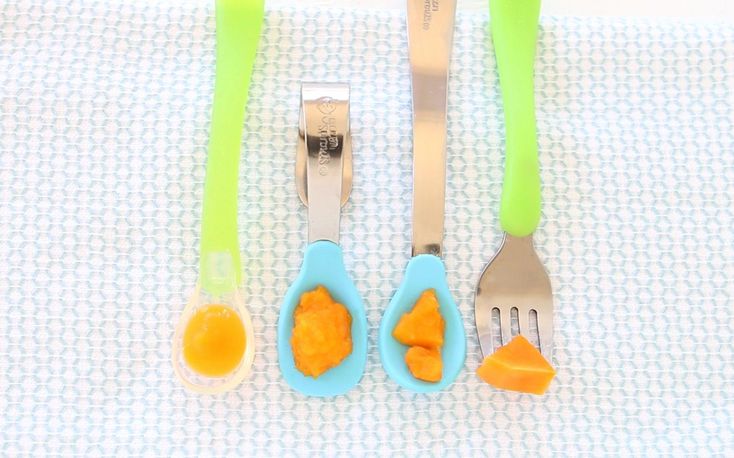
3. Offer tons of opportunities for practice with long, resistive, teether type foods (like a mango pit, a spare rib or other thick rib with all lose bits and gristle removed and most of the meat cut off, or a thick pineapple core that does not taper and won’t easily snap or break apart). These foods aren’t for eating, but for helping the brain learn about and desensitize the inside of the mouth. Gagging is the brain’s way of saying “something isn’t right here,” and mouthing these hard, resistive foods that baby can easily pull back out of the mouth helps the brain learn that food isn’t an “intruder.” Mouthing fingers, toys, and infant spoons as teethers outside of mealtimes can also help dampen that gag reflex a bit.
If you try these tips and your baby continues to forcefully gag and vomit at most meals, you may want to mention it to your child’s medical provider.
When to seek helpWe recommend you speak with your child’s pediatrician regarding a referral to a feeding therapist if:
- Baby continues to gag at most meals after an initial learning period (one to two months of finger foods).
- Baby is frequently becoming upset after gagging (crying, tantrums, vomiting).
- Baby is vomiting at most meals, even on an empty stomach.
While it can be disturbing—and nerve-wracking to watch—gagging is a completely normal reflex in infants, children, and adults. Bottom line:
- Babies will likely gag when they first start solids, regardless of starting on purées or finger food.
- Babies who are spoon-fed thin purées are likely to gag less initially but gag more later on when they start finger foods.
- Babies who start with finger foods tend to gag more in the beginning and less later on as their oral-motor skills develop more rapidly.
- All babies gag in their eating journey—it’s one way they learn how to eat. The good news is that babies typically outgrow gagging after a couple of months of practice with various textured finger foods.
Infant CPR & First Aid Resources
One of the most important things you can do to protect baby is take a CPR class online or at your local health facility and review safety procedures.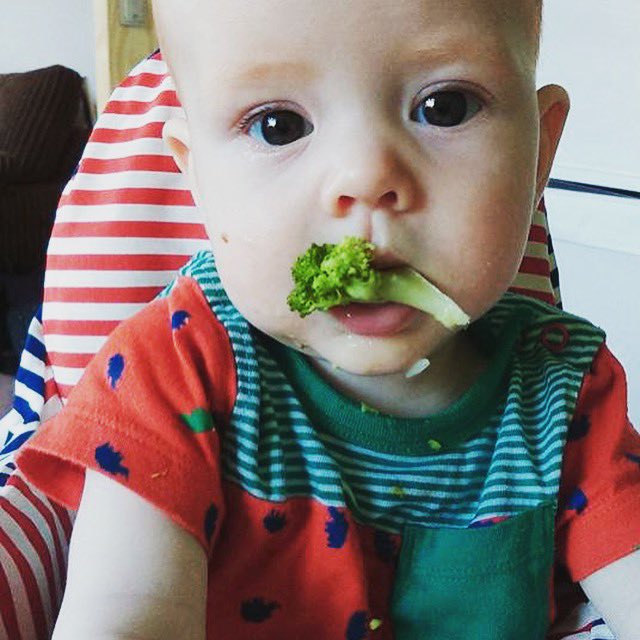 Some resources:
Some resources:
- American Red Cross: Child & Baby CPR
- American Heart Association: Infant CPR Training Kits
- MedlinePlus: Choking First Aid for Infants Under 1
Remember, you are responsible for supervising your child’s health care and for evaluating the appropriateness of the information in this article for your child. Only you know your child and how your child will react to foods and feeding procedures. Although the information presented in this article is based on well-documented research by medical and nutritional professionals, it is up to you to review and consider the information and how it will work with your child.
Always seek the advice of your pediatric doctor, nutritionist or health care provider with any questions you may have regarding a medical condition or feeding issue. You should refer to our Terms of Use for further information.
Reviewed by:
K. Rappaport, OTR/L, MS, SCFES, IBCLC
K. Grenawitzke, OTD, OTR/L, SCFES, IBCLC, CNT
- Matsuo K, Palmer JB.
 Anatomy and physiology of feeding and swallowing: normal and abnormal. Phys Med Rehabil Clin N Am. 2008 Nov;19(4):691-707, vii.
Anatomy and physiology of feeding and swallowing: normal and abnormal. Phys Med Rehabil Clin N Am. 2008 Nov;19(4):691-707, vii. - Nishino T. The swallowing reflex and its significance as an airway defensive reflex. Front Physiol. 2012;3:489.
- Rapley, G., & Murkett, T. (2010). Baby-Led Weaning. The Essential Guide to Introducing Solid Foods.
- Naylor, A. J., & Marrow, A. L. (2001). Infant Oral Motor Development in Relation to the Duration of Exclusive Breastfeeding. Developmental Readiness of Normal Full Term Infants to Progress from Exclusive Breastfeeding to the Introduction of Complementary Foods, 21–25.
- Isaac, N., & Choi, E. (2018). Infant anatomy and physiology for feeding. In S. H. Campbell, J. Lauwers, R., Mannel, & B. Spencer (Eds.), Core curriculum for interdisciplinary lactation care (pp. 37-55). Burlington, MA: Jones & Bartlett Learning.
- Naylor, A. J., & Marrow, A. L. (2001). Infant Oral Motor Development in Relation to the Duration of Exclusive Breastfeeding.
 Developmental Readiness of Normal Full Term Infants to Progress from Exclusive Breastfeeding to the Introduction of Complementary Foods, 21–25.
Developmental Readiness of Normal Full Term Infants to Progress from Exclusive Breastfeeding to the Introduction of Complementary Foods, 21–25. - Naylor, A. J., & Marrow, A. L. (2001). Infant Oral Motor Development in Relation to the Duration of Exclusive Breastfeeding. Developmental Readiness of Normal Full Term Infants to Progress from Exclusive Breastfeeding to the Introduction of Complementary Foods, 21–25.
- Fangupo, L. J., Heath, A.-L. M., Williams, S. M., Erickson Williams, L. W., Morison, B. J., Fleming, E. A., Taylor, B. J., Wheeler, B. J., & Taylor, R. W. (2016). A Baby-Led Approach to Eating Solids and Risk of Choking. PEDIATRICS, 138(4).
- Fangupo, L. J., Heath, A.-L. M., Williams, S. M., Erickson Williams, L. W., Morison, B. J., Fleming, E. A., Taylor, B. J., Wheeler, B. J., & Taylor, R. W. (2016). A Baby-Led Approach to Eating Solids and Risk of Choking. PEDIATRICS, 138(4).
- Naylor, A.
 J., & Marrow, A. L. (2001). Infant Oral Motor Development in Relation to the Duration of Exclusive Breastfeeding. Developmental Readiness of Normal Full Term Infants to Progress from Exclusive Breastfeeding to the Introduction of Complementary Foods, 21–25.
J., & Marrow, A. L. (2001). Infant Oral Motor Development in Relation to the Duration of Exclusive Breastfeeding. Developmental Readiness of Normal Full Term Infants to Progress from Exclusive Breastfeeding to the Introduction of Complementary Foods, 21–25. - Fangupo, L. J., Heath, A.-L. M., Williams, S. M., Erickson Williams, L. W., Morison, B. J., Fleming, E. A., Taylor, B. J., Wheeler, B. J., & Taylor, R. W. (2016). A Baby-Led Approach to Eating Solids and Risk of Choking. PEDIATRICS, 138(4).
Why babies gag themselves, and what to do if your baby's gagging on food
It's normal for babies to gag. They may gag when they're first getting used to eating, taste something they don't like, or have too much to eat. Gagging is different from choking: Gagging resolves on its own, but a choking baby needs help. You can tell a baby is choking if they're unable to cry, talk, or cough. If your newborn is gagging, try slowing the flow of milk by changing nursing positions or changing the bottle nipple. If your baby gags on food, they may not be ready for solids yet – or you may need to keep trying.
If your baby gags on food, they may not be ready for solids yet – or you may need to keep trying.
We all have a gag reflex – it's a lifelong automatic response that helps prevent choking.
Gagging is normal for babies as they learn to eat solids, whether they're spoon-fed or you're doing baby-led weaning. Gagging brings food forward into your baby's mouth to help them learn how to chew.
Until your baby's around 6 months old, they also have a reflex that causes them to thrust their tongue forward whenever the back of their throat is stimulated. This tongue-thrust reflex can make early solid feedings a bit of a challenge, so it's best to wait until the reflex is gone to try solid feeding. Still, gagging on or pushing out those first spoonfuls of pureed food isn't uncommon.
Prodding your baby to eat more than they want can cause them to gag, as can having too much food (or food they don't like) in their mouth. Some babies will even gag on their own fingers until they figure out how far they can put things in their mouths. And until they get the rhythm of sucking, some infants will gag while breastfeeding or bottle-feeding, especially if it's flowing too quickly for them.
And until they get the rhythm of sucking, some infants will gag while breastfeeding or bottle-feeding, especially if it's flowing too quickly for them.
The difference between gagging and choking
Gagging is different from choking. Choking means your child's airway is partially or completely blocked, which prevents breathing. Here's how to recognize the difference between gagging and choking:
A child who's gagging may push their tongue forward or out of their mouth and do a retching movement to try to bring food forward. Their eyes may water. They may cough or even vomit. Let your child continue to gag and cough – it means their airway isn't completely blocked.
Coughing can usually effectively clear their airway. Don't pat them on the back or reach into their mouth to try to grab the object. Doing either can cause whatever they're gagging on to go farther down their airway. It's best to calmly stay with them and make sure they completely recover.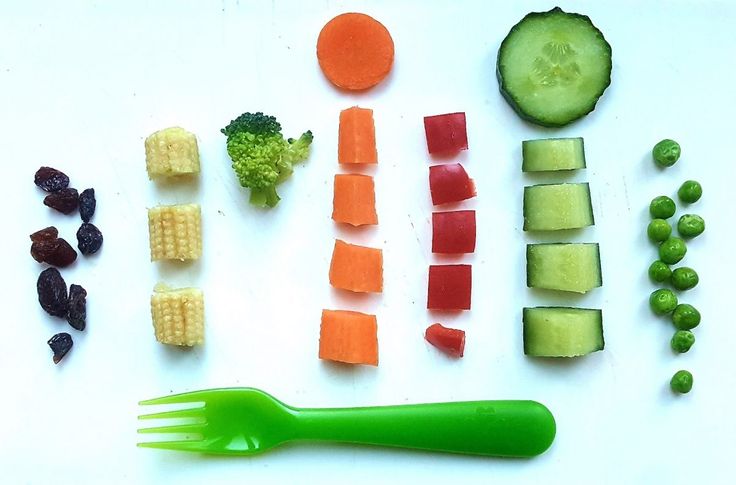
A child who's choking is unable to talk, cry, or cough because their airway is blocked. They may gasp or wheeze, make odd noises, or make no sound at all while opening their mouth. They may grab at their throat or appear panicked. A choking child might turn blue because they aren't getting oxygen. They may need first aid for choking – back blows and chest thrusts (or, for children over age 1, abdominal thrusts) – to dislodge the blockage.
This is best done by someone who's trained, so it's a good idea to learn first aid for choking and infant CPR in case you ever need it. BabyCenter offers a virtual Infant CPR and Choking course led by a top pediatric ER doctor.
If your child is unable to breathe, talk, or make noise, call 911 immediately.
Newborn gagging
Newborns might have their gag reflex stimulated if the breast milk or formula they're fed comes out too quickly, especially when they're first getting used to eating.
Try to get your baby to relax during feedings and don't push them to eat more than they want.
If you're breastfeeding, the flow of milk coming out (the "letdown") can be strong – especially in the early weeks – and cause your baby to gag. Try nursing your baby with them in more of an upright position, so they aren't lying down. This might help slow the flow as it enters their mouth. You can also try nursing in a side-lying position (with both of you lying on your sides) to slow the milk flow as well.
If you create a lot of milk, or it's been a little longer than usual since you last nursed your baby and your breasts feel engorged, you can try pumping or hand-expressing milk for just a few minutes to get past the initial forceful letdown before nursing your baby. Then, the milk flow will be a little slower.
If your baby is bottle-fed, make sure the nipple is the right size. Nipples with faster flow have more holes, and can allow too much breast milk or formula to come out at once, causing babies to gag.
What if your baby's gagging on food?
It's scary when your baby gags on food, but it's part of the normal process of learning to eat. Try not to worry when it happens, as hard as that might be.
Try not to worry when it happens, as hard as that might be.
From birth to around 7 to 9 months, the gag reflex is actually triggered closer to the front of the mouth. Because of this, gagging might be more common when first starting solids and lessen once your baby gets older (around 9 to 12 months), when the gag reflex moves more to the back of the mouth.
If you're starting to introduce solid foods and your baby gags, here's what you can do.
Make sure your baby is ready for solid food before you introduce it. This usually happens around 6 months old, once your baby is able to sit upright, has good head control, grasps, turns away when full, and shows an interest in food, leaning forward and opening their mouth when food comes near.
When you think your baby's ready, start by putting a small amount of food on a spoon. Tip the spoon to get a bit of the food on the front of their tongue, rather than putting the whole spoonful in their mouth, which may trigger the gag reflex.
If your baby pushes the food out with their tongue, it doesn't necessarily mean that they don't like it – they're probably just trying to figure out this new way of eating. Feed them slowly while they get the hang of it.
After a few tries, they'll start using their tongue to move the food to the back of their mouth. If your baby is still pushing food out of their mouth or having trouble swallowing food after a week of trying, they may not be ready for solids yet.
If you're introducing your baby to solid food through baby-led weaning, gagging is also a normal part of the process. Your baby's learning to feed themself, and that's naturally going to come with some bumps along the way. Let your baby work out the gagging on their own, but keep an eye on them to make sure they're not choking.
To help keep your baby from gagging on finger foods, feed them soft, easy-to-swallow food that's cut into bite-size pieces once they develop the pincer grasp, at around 8 or 9 months old. If you're doing baby-led weaning, you'll give them large pieces of soft foods to grab and gnaw on. These foods should pass the squish test – they should squish easily between your thumb and forefinger or between your tongue and the roof of your mouth – so they're easy for your baby to eat.
If you're doing baby-led weaning, you'll give them large pieces of soft foods to grab and gnaw on. These foods should pass the squish test – they should squish easily between your thumb and forefinger or between your tongue and the roof of your mouth – so they're easy for your baby to eat.
Don't give them foods that are choking hazards, like whole grapes, hot dogs, nuts, raw vegetables, large chunks of meat or cheese, popcorn, or other cylindrical foods that can block the airway (like pieces of sausage or hot dog).
If your baby gags because they don't like the texture of solid food, try giving them different types of food – and remember that it's normal to have to give a baby a new food many times before they'll accept it.
If your baby turns away or cries, they're done eating. Resist the urge to push extra food on them or make them eat more once they're done.
Your baby will most likely gag less as they get more meals under their belt and as they get older, though some kids do have an overactive gag reflex. If your baby is still gagging about a month after starting solids, mention it to their doctor. Your baby's doctor can give you input and check for problems, or may even suggest seeing a specialist, just to be sure.
If your baby is still gagging about a month after starting solids, mention it to their doctor. Your baby's doctor can give you input and check for problems, or may even suggest seeing a specialist, just to be sure.
Child chokes on food | Mamovediya
Although the reluctance to swallow solid food is a natural response in many situations, and not just those involving food, infants and young children should not constantly choke.
If your child is constantly choking, or the face starts to turn red, or the skin around the lips turns blue, take your child to the doctor. In rare cases, this may indicate a problem requiring medical attention.
Although your father may be alarmed that you choke on the first spoonful of solid food, this happens quite often when the child starts eating. You have to learn to eat solid food.
In the sucking reflex, babies move their tongue to the front of their mouth and then up to the palate. They make 10 to 20 sucking movements, and then a big gulp follows. With solid food, however, the tongue must almost reverse, sending the food to the back of the mouth.
With solid food, however, the tongue must almost reverse, sending the food to the back of the mouth.
Learning to swallow solid foods is not easy for an infant. And during the learning process, he may choke if food is directed to his windpipe instead of his stomach.
You can, however, make eating a much easier exercise when the baby does not choke. To do this, you need to master new feeding techniques.
Here are some expert tips.
Wait until the child starts to sit up. If your child is constantly choking on food while eating, it is possible that he has not yet reached the stage of development at which he is ready for this. Your baby must be at least four or five months old before you start solid food.
What is the advice? Give the child solid food when he has already learned to sit more or less confidently. When your child eats while seated, gravity will help guide the food from the mouth into the esophagus.
Start with liquid food . When your baby is really hungry, breastfeed or give him a bottle first to satisfy his appetite a little. If your child is not so desperately hungry, he will be able to handle the difficult task of swallowing solid food more easily.
Eat rice. Rice grains are an ideal first food for children because children are rarely allergic to rice and can be thinned by mixing with plenty of milk.
Your baby will have less difficulty eating porridge if the consistency is more like liquids he is used to swallowing. Once your baby has learned to swallow rice porridge, you can gradually move on to thicker, coarser foods.
Let the first feedings be small . The first solid food feedings are for practice, not for real nutrition. An infant who is learning to eat only needs a few tablespoons of solid food a day to practice eating. The main nutrition should come from breast milk or artificial bottle feeding.
Start with a small amount of food . When your child opens his mouth, place a pea-sized portion of food on the front of his tongue. A large portion of food will make the whole process of swallowing more difficult for him, and if you put it on the back of the tongue, your child is likely to choke on it.
Do everything calmly, carefully and slowly. Take your time if your child is having difficulty with a new food.
If your child chokes on a particular type of food, such as potatoes or minced meat, pediatricians recommend not eating the food for a few days, then trying it again in a thinner consistency.
Do not overfeed your baby. If your baby vomits or chokes on every feed, it is possible that you are giving him more than he can handle.
In the first year of life, the baby cannot properly control the intake of food, so your task is not to overfeed him.
Watch for signs that the baby is full. He may begin to turn his head away or close his mouth when the spoon comes close to his lips.
What to do if the child does not want to chew - "Healthy Child's Internet Cabinet"
Home - Healthy Child Cabinet - Related Articles - Nutrition - What to do if the child does not want to chew
Ufimtseva Olesya Borisovna
Social teacher of the consultative and health-improving department of the City Center for Medical Prevention
Transferring a child from ready-made formulas and breast milk to adult food is a problem for many parents, since the baby cannot learn to chew food, is naughty, refuses new foods, and spits out what he cannot swallow without chewing. The transition to more solid foods that must be chewed in order to be eaten is a natural physiological process associated with the development of various body systems. The digestive system gradually gets used to the digestion of solid food. The demand for nutrients is growing. A variety of "adult" foods can satisfy her. If a child does not learn to eat normally, then the nutrition of all tissues of his body will be disrupted. This affects his physical and intellectual development. If there is still a problem with chewing, then do not panic. Some special tips will help teach your baby to chew pieces of food.
This affects his physical and intellectual development. If there is still a problem with chewing, then do not panic. Some special tips will help teach your baby to chew pieces of food.
Dr. E.O. Komarovsky gives the following simple advice to parents who are faced with the unwillingness of the baby to chew food:
- To teach your child to chew both soft foods and hard pieces, you need to gradually add dishes with larger food particles to the meal. For example, soft bread can be gradually added to the soup so that the child can feel the pieces of food on the tongue. You can give the baby a boiled carrot: it is convenient to hold it and it is interesting to pull it into the mouth. In order for the baby to learn to chew food, you need to give him a tasty and beautiful cookie or a piece of sweet fruit that he likes. A bagel will do. Some parents give children as early as the age of 5-6 months drying or baby biscuits. At this age, as a rule, there are no teeth yet, but the child works on drying, because he feels a pleasant taste.
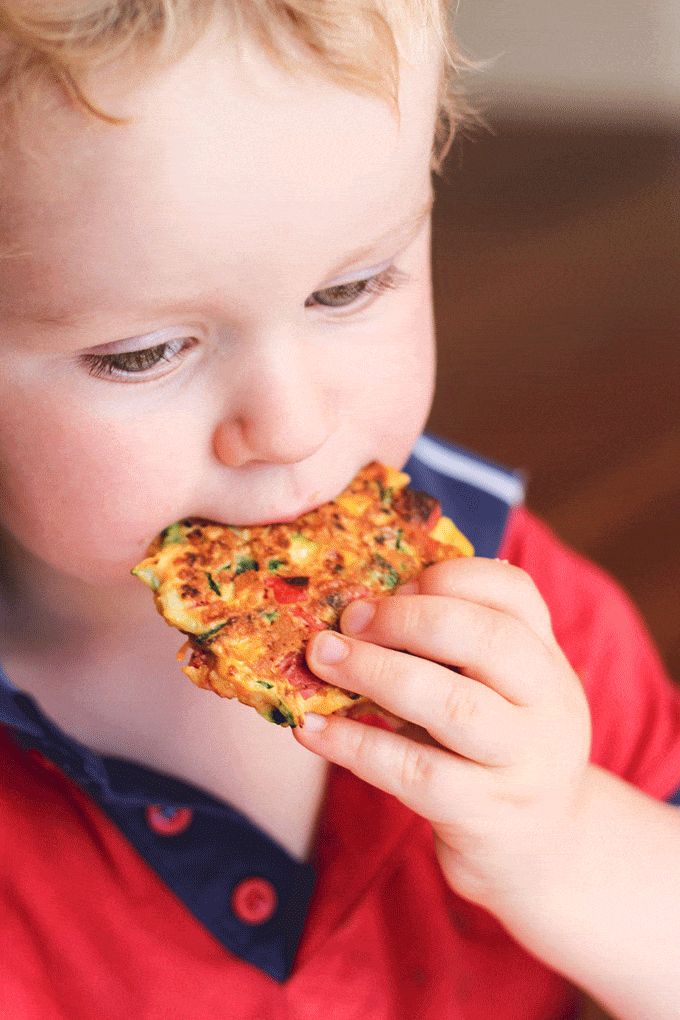 He soaks it in his mouth, bites off small pieces with his gums, learns to chew and swallow them. Drying should be given not so much for saturation, but for the development of the chewing reflex. Then, when the first teeth appear, it will be more difficult for the baby to get used to such a useful and tasty toy. It is uncomfortable for him to bite with his gums, and there are still few teeth. Of course, you need to carefully monitor so that the baby does not choke.
He soaks it in his mouth, bites off small pieces with his gums, learns to chew and swallow them. Drying should be given not so much for saturation, but for the development of the chewing reflex. Then, when the first teeth appear, it will be more difficult for the baby to get used to such a useful and tasty toy. It is uncomfortable for him to bite with his gums, and there are still few teeth. Of course, you need to carefully monitor so that the baby does not choke. - Mom and dad do not have to immediately agree with the stubborn demand of the crumbs to give him the usual pureed food. Parents should show artistry, portray regret that, for example, the blender is broken. In extreme cases, you can give the baby a fork so that he mashes the pieces of potatoes. He will surely like it, although the lack of skill may lead to the fact that half of the puree will be on the floor, but the next time the child will demand just such “interesting” food, stuffing it into his mouth (the fork must be special - plastic, with blunt teeth) .
